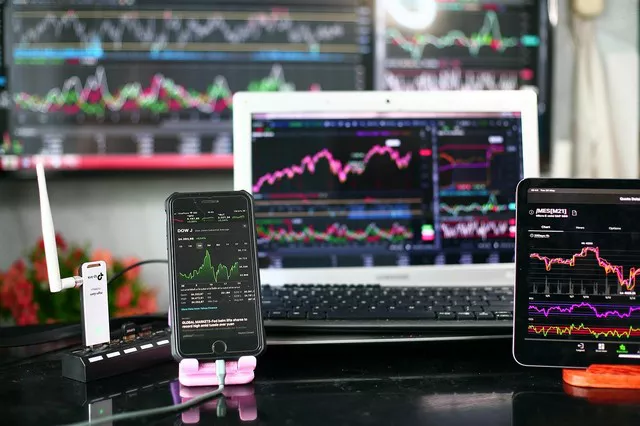In the realm of financial markets, futures trading offers a plethora of opportunities for investors seeking to capitalize on price movements across various asset classes. However, navigating the futures market requires a solid understanding of its mechanics, strategies, and regulatory landscape. In this comprehensive guide, we demystify the world of futures trading, providing insights into its fundamentals, benefits, practicalities, and resources for further learning.
Introduction to Futures: Understanding the Basics
Futures contracts are derivative financial instruments that obligate parties to buy or sell an underlying asset at a predetermined price on a specified future date. Unlike traditional stocks or bonds, futures derive their value from an underlying asset such as commodities, currencies, or stock indices. One key distinction of futures is their standardized nature, with contracts typically traded on regulated exchanges and subject to specific terms and conditions.
Benefits of Trading Futures: Seizing Opportunities
Futures trading offers several advantages for investors. Firstly, futures contracts allow traders to leverage their capital, enabling them to control a larger position with a relatively small amount of capital. Additionally, futures serve as effective hedging tools, allowing businesses to mitigate risks associated with price fluctuations in underlying assets. Moreover, futures markets provide ample opportunities for speculation, enabling traders to profit from both rising and falling prices through long and short positions.
Understanding the Market: Navigating the Landscape
The futures market operates through regulated exchanges, where buyers and sellers come together to trade standardized contracts. These exchanges play a crucial role in facilitating trading, ensuring transparency, and maintaining market integrity. Each futures contract represents a specific quantity of the underlying asset, with standardized terms including contract size, expiration date, and tick size. Traders can enter into futures contracts by either buying (going long) or selling (going short) them, depending on their market outlook.
See Also: Which futures is most profitable?
Setting Up a Trading Account: Getting Started
To trade futures, individuals need to open a trading account with a reputable brokerage firm that offers access to futures markets. When selecting a broker, it’s essential to consider factors such as trading commissions, margin requirements, trading platforms, and customer support. Once an account is opened and funded, traders can access the futures market through the broker’s trading platform, where they can execute trades, monitor positions, and access market data.
Developing a Trading Plan: Mitigating Risks
A crucial aspect of successful futures trading is having a well-defined trading plan. This plan should outline clear objectives, risk management strategies, and criteria for entering and exiting trades. Risk management is paramount in futures trading, as leverage amplifies both potential profits and losses. Traders should establish stop-loss levels to limit losses and adhere to strict position sizing guidelines to preserve capital. Additionally, setting profit targets can help traders capitalize on favorable market movements while avoiding greed-driven decisions.
Technical and Fundamental Analysis: Making Informed Decisions
Traders employ various analytical techniques to assess market trends and identify trading opportunities. Technical analysis involves analyzing price charts and indicators to forecast future price movements based on historical price data and market patterns. Fundamental analysis, on the other hand, focuses on evaluating the underlying factors driving asset prices, such as supply and demand dynamics, economic indicators, and geopolitical events. By combining both technical and fundamental analysis, traders can make more informed trading decisions.
Order Types and Execution: Executing Trades Efficiently
Futures traders utilize different types of orders to enter and exit positions in the market. Market orders are executed immediately at the prevailing market price, while limit orders are executed at a specified price or better. Stop orders are used to trigger a market order once a certain price level is reached, helping traders manage risk and protect profits. Additionally, advanced order types such as bracket orders and contingent orders enable traders to automate their trading strategies and manage multiple positions simultaneously.
Regulatory Considerations: Navigating Compliance
Futures trading is subject to regulatory oversight to ensure fair and orderly markets. Regulatory bodies such as the Commodity Futures Trading Commission (CFTC) in the United States oversee futures exchanges and regulate futures trading activities to safeguard market integrity and protect investors. Traders should be aware of regulatory requirements, including margin requirements, position limits, and reporting obligations, to ensure compliance and mitigate legal risks.
Practical Examples: Learning Through Experience
To illustrate the process of futures trading, let’s consider a hypothetical example involving the trading of crude oil futures. Suppose a trader believes that the price of crude oil will rise in the coming months due to geopolitical tensions in oil-producing regions. The trader decides to enter a long position in crude oil futures contracts, buying contracts at the prevailing market price. As the price of crude oil increases over time, the trader can profit by selling the contracts at a higher price, realizing a gain on the trade.
Resources for Further Learning: Continuing Education
For individuals interested in delving deeper into futures trading, there are numerous resources available to enhance their knowledge and skills. Online tutorials, webinars, and educational articles provide valuable insights into various aspects of futures trading, from basic concepts to advanced strategies. Additionally, professional certifications such as the Chartered Alternative Investment Analyst (CAIA) designation offer specialized training in alternative investments, including futures trading.
Conclusion
In conclusion, futures trading offers a dynamic and accessible avenue for investors to participate in global financial markets. By understanding the fundamentals, benefits, strategies, and regulatory considerations of futures trading, individuals can effectively navigate this complex yet rewarding market. Continued education and practice are essential for honing skills and staying abreast of evolving market trends and opportunities.


